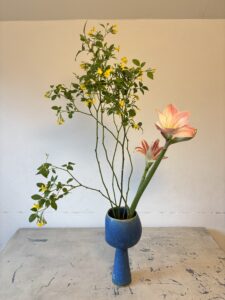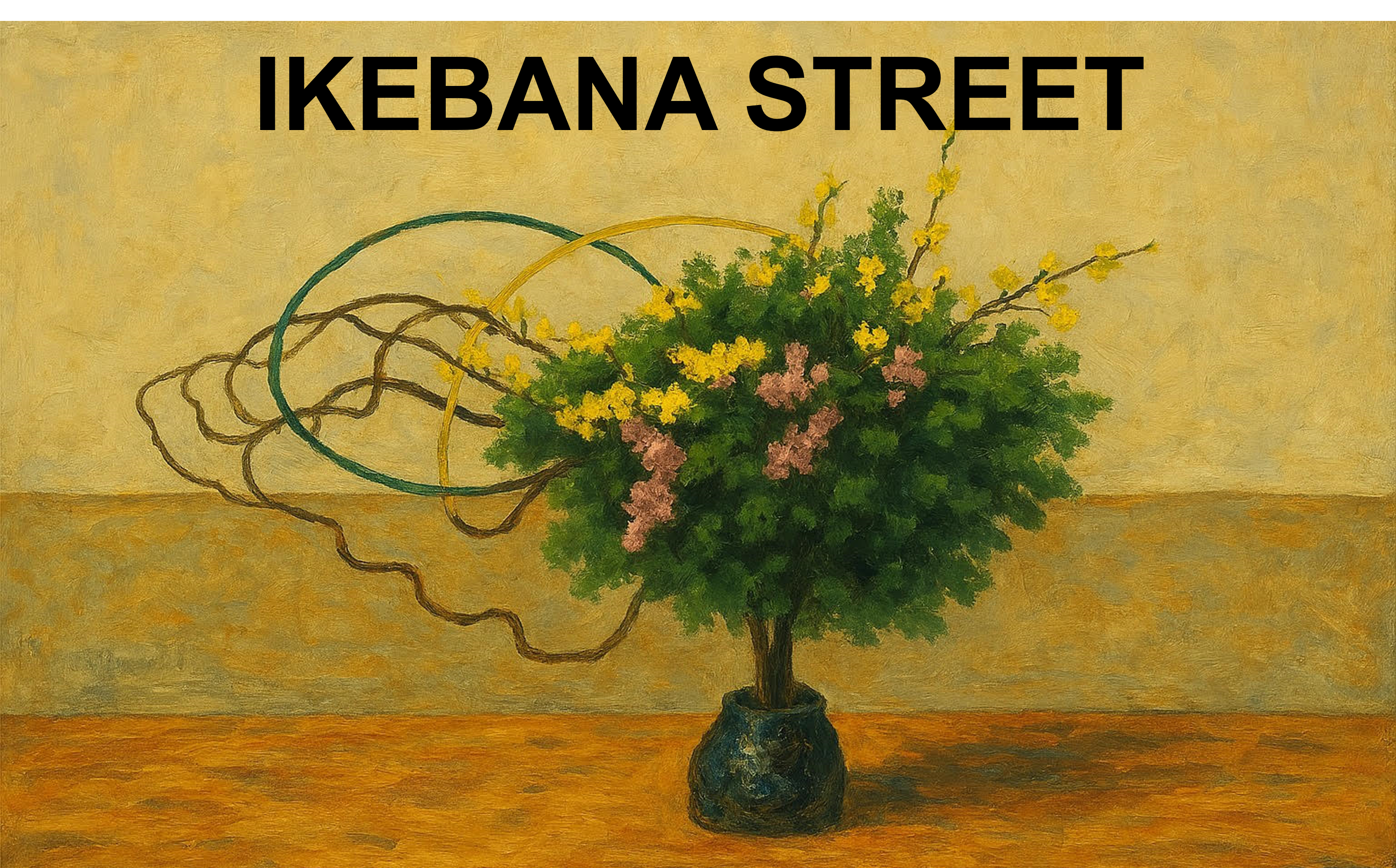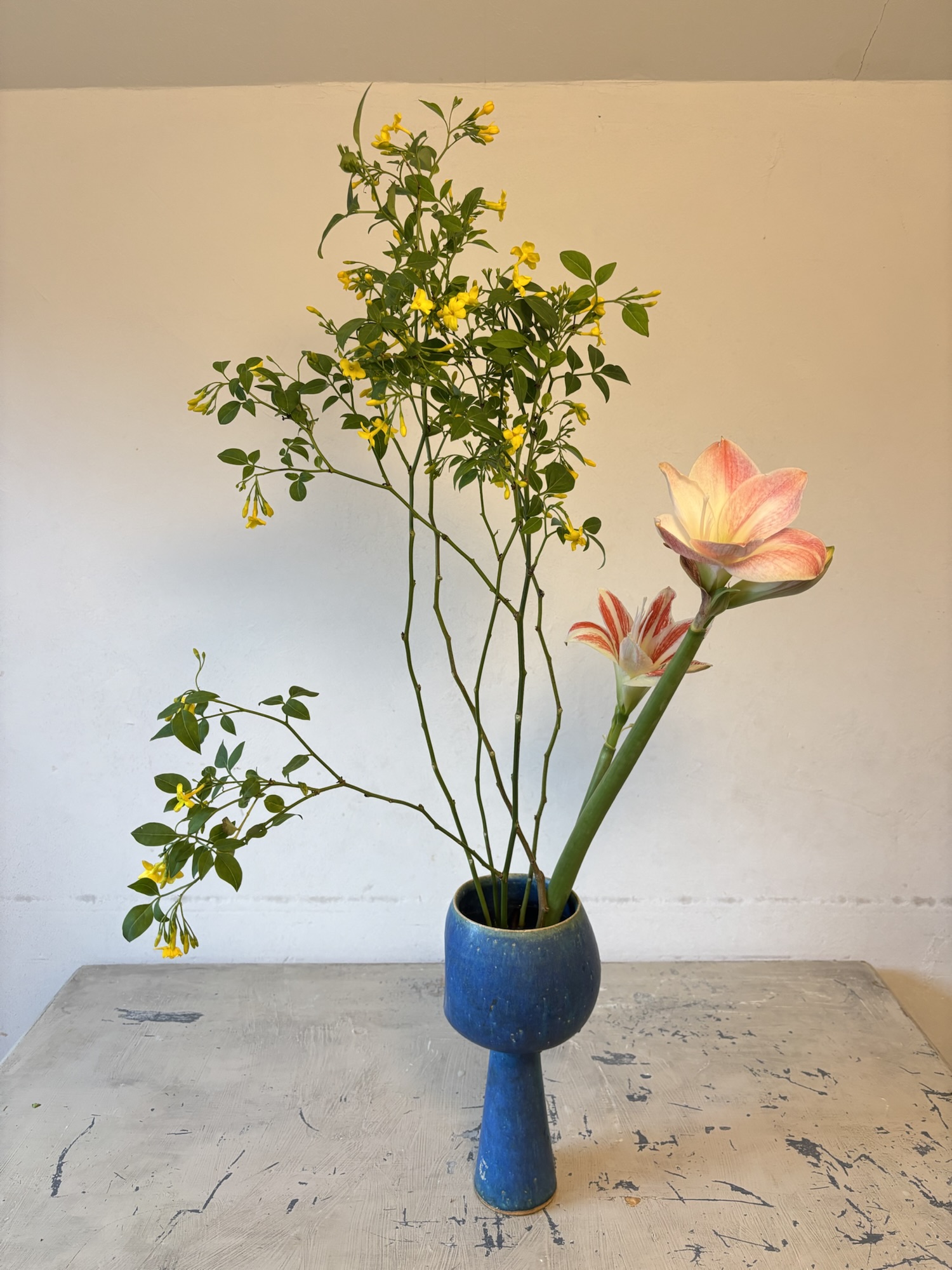This article focuses on two fundamental ikebana elements—line and mass—and introduces a work that expresses both using primarily one type of material.

Table of Contents
- Tip 1: Choosing the right material to express lines and masses
- Tip 2: Boldly trimming leaves and branches to emphasize line and mass
- Materials used (Yellow Jasmine, Amaryllis)
- Conclusion
Tip 1: Choosing the right material to express lines and masses
Choosing materials for “line”
- Thin branches
Thin branches are well-suited to creating delicate lines in space and help form a light, airy impression. Their subtle curves and angles naturally draw the viewer’s eye, making them effective for highlighting linear movement. - Curved rather than straight
Branches with gentle bends or unique curves tend to have a more expressive and individual character. These are ideal for representing lines with personality and flow, giving each branch a distinct presence in the composition.
Choosing materials for “mass”
- Leaves or flowers that aren’t too large (able to cluster tightly)
Large leaves or flowers often scatter visually and are harder to group into cohesive forms. Using smaller, denser materials allows you to create a more clearly defined mass within the arrangement. - Flowers with small blooms that cluster naturally
Even small flowers, when gathered tightly, can form a strong visual mass. This makes them easier to handle compositionally and helps create a striking contrast with the lines, resulting in a more balanced and structured work.
Tip 2: Boldly trimming leaves and branches to emphasize line and mass
- Trim boldly to reveal the line
To fully express the natural lines of the material, it’s essential to remove unnecessary leaves and branches. If too much is left, the lines become hard to perceive—don’t hesitate to trim with purpose and clarity. - Cut cleanly to avoid stray branches
The way you prune makes a big difference. Ragged cuts or leftover twigs can make the entire piece feel unrefined. Clean, intentional cuts result in a sharper and more polished impression. - Ensure additional materials don’t disrupt the lines or mass
When incorporating other materials—like amaryllis in this case—make sure they don’t overpower the main lines or mass. Carefully control their volume and placement. In this piece, the amaryllis was placed off to the side to act as a subtle accent rather than the focal point.

Red indicates the lines, and blue indicates the mass.
Materials used (Yellow Jasmine, Amaryllis)
- Yellow Jasmine
Used as the line material. Its soft, flexible branches create graceful curves, introducing flow and rhythm to the entire composition. The small yellow flowers add brightness and a sense of spring. - Amaryllis
With its large blooms and thick stems, amaryllis contrasts strongly with the jasmine. It was used in moderation and positioned to avoid overlapping with the jasmine, playing more of a supporting role in the structure.
Conclusion
To express both line and mass using a single type of material, selection is key. Once the material is chosen, bold and intentional trimming allows for a dynamic, well-balanced composition. Try experimenting with this approach to bring greater depth and structure to your own ikebana creations.



